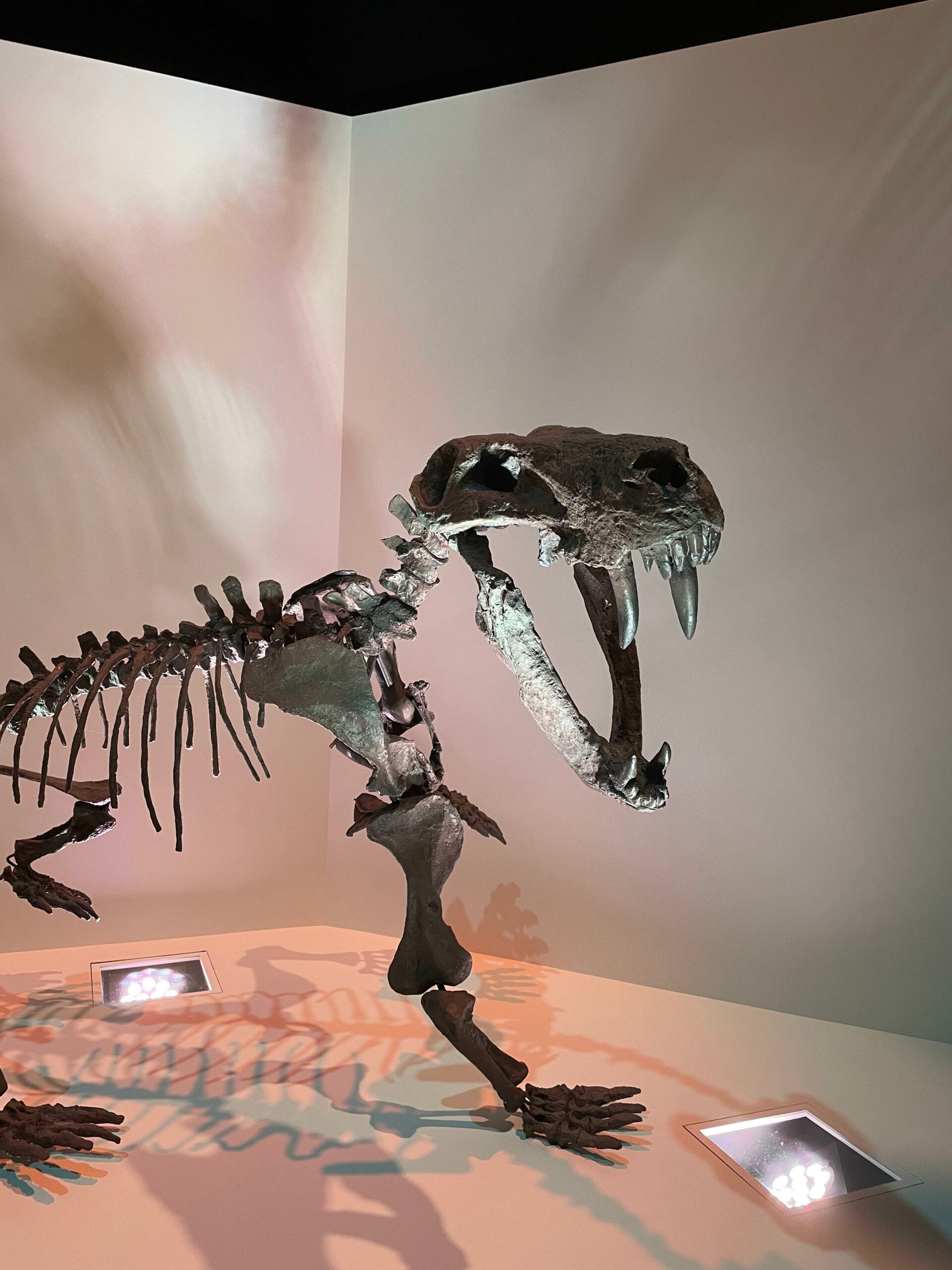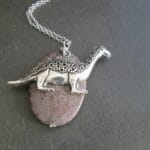Journey back to the Permian era and witness a prehistoric battle for the ages! Two saber-toothed titans, Inostrancevia and Gorgonops, reigned as apex predators millions of years ago. Imagine these behemoths as the ultimate rulers of their time, each possessing unique adaptations that secured their place at the top of the food chain. Let’s delve into the mysteries of these ancient beasts, uncovering what made them so formidable and exploring the possibility of a Permian saber-tooth showdown.
Inostrancevia: Unveiling the Saber-Toothed Titan
Imagine a time long before the dinosaurs, during the Late Permian period, when a creature named Inostrancevia roamed the Earth. This behemoth dwarfed modern-day tigers, reaching lengths of over 11 feet, and brandished saber-like teeth that would make a lion think twice. Inostrancevia was the undisputed king of its domain, a top predator that ruled the Late Permian with unmatched ferocity.
Fascinatingly, Inostrancevia fossils have been found in two vastly distant locations—Russia and South Africa. This geographical spread suggests incredible migration patterns, possibly driven by the need to follow migrating prey or escape environmental changes. This adaptability likely played a role in its survival during the tumultuous period leading up to the most severe extinction event in Earth’s history—the Permian-Triassic extinction.
Inostrancevia’s most striking feature was its set of incredibly long, saber-like canines. Unlike those of bone-crushing predators, these teeth were likely precision weapons, designed to deliver swift, fatal blows by piercing vital organs. While a tiger might grapple and hold its prey, Inostrancevia probably employed a more surgical approach, aiming for a quick kill.
And its prey? We’re talking about massive herbivores, some potentially larger than modern-day cows. This paints a vivid picture of the epic battles that must have unfolded in this prehistoric world – a true clash of titans.
But even apex predators aren’t invincible. Despite its size and power, Inostrancevia couldn’t escape the cataclysmic environmental changes of the “Great Dying.” The world was changing, and even the mightiest creatures faced extinction.
What remains of these incredible animals are their fossils, offering a window into a world vastly different from our own. Scientists meticulously study these remains, piecing together the story of Inostrancevia, its behavior, its diet, and the ecosystem it ruled. Every discovery adds a new layer of understanding, not just of Inostrancevia, but of the entire Late Permian ecosystem. It serves as a reminder of life’s resilience, its ability to adapt and evolve, even in the face of extraordinary challenges. The study of Inostrancevia is an ongoing testament to the power of life to persist and the constant forces that shape our planet.
Is Inostrancevia a Dinosaur? Unpacking the Truth About This Saber-Toothed Predator
With its fearsome saber-like teeth and a body built for hunting, it’s easy to see why someone might mistake Inostrancevia for a dinosaur. However, appearances can be deceiving.
Inostrancevia actually predates dinosaurs by a significant margin, existing during the Late Permian period, long before the reign of the dinosaurs. While it shares similarities with dinosaurs, such as its size and predatory nature, it occupies a completely different branch of the evolutionary tree.
Picture a family reunion. Your immediate family—parents, siblings, maybe some cousins—represent the dinosaurs. Then there are your distant relatives, the ones you only see at large gatherings – this is where Inostrancevia fits in. It belonged to a group called synapsids, which are more closely related to mammals—including us!—than to dinosaurs.
To simplify, Inostrancevia was a therapsid, a type of animal within the synapsid lineage. This doesn’t mean it was cuddly; it was a highly successful apex predator, likely using its impressive saber-like teeth to dominate its domain. Its wide geographical range, spanning from Russia to South Africa, underscores its evolutionary success.
Despite superficial resemblances to dinosaurs, Inostrancevia lacked certain key dinosaurian features. For instance, dinosaurs possessed a unique hip structure that allowed them to stand upright on two legs. Inostrancevia, however, had a more sprawling posture, similar to the difference between a dog and a lizard – both have four legs, but they move in distinct ways.
What’s even more intriguing is that Inostrancevia existed during the Permian-Triassic extinction event, also known as the “Great Dying,” which decimated a vast portion of life on Earth. Remarkably, Inostrancevia managed to survive. This raises questions about the creature’s resilience and how it navigated such a catastrophic event.
So, while Inostrancevia might initially appear dinosaur-like, it represents a completely different kind of beast. It reminds us that the history of life on Earth is filled with surprises and challenges our assumptions about the past.
What Does Inostrancevia Mean?
We know that Inostrancevia was a formidable predator of the Late Permian, but have you ever wondered about its name and its origin?
The name Inostrancevia pays homage to a renowned Russian geologist, Aleksandr Inostrantsev. This fossil-hunting pioneer dedicated much of his life to exploring the fossil-rich layers of Northern Dvina, Russia. And guess what he unearthed? That’s right, the remains of our fearsome friend, Inostrancevia! This groundbreaking discovery eventually ended up in the capable hands of Professor Vladimir P. Amalitsky, who bestowed upon our predator its official scientific name.
The name Inostrancevia is more than just a tribute to Inostrantsev; it also speaks to the creature’s uniqueness. The specific name, “inostranszewi,” translates roughly to “Inostrantsev’s one.” This suggests that scientists recognized they had stumbled upon something extraordinary, a creature unlike anything they had encountered before. Inostrancevia wasn’t just another fossil; it represented a significant leap forward in the field of paleontology.
Is Inostrancevia a Mammal?: Unlocking the Secrets of this Saber-Toothed Predator
The fascinating creature known as Inostrancevia often sparks questions about its place in the animal kingdom. While its appearance might scream “dinosaur,” the truth is far more complex and intriguing. Inostrancevia was not a dinosaur; it was a therapsid.
Therapsids represent a fascinating group of animals that serve as a crucial link between reptiles and mammals. These “proto-mammals” possessed a mix of reptilian and mammalian characteristics, offering valuable insights into the evolutionary journey that ultimately led to mammals – yes, even us!
Those impressive saber-teeth weren’t just for show. They were Inostrancevia’s tools of the trade, perfectly designed for piercing flesh and bringing down prey. As an apex predator of the Late Permian period, roughly 260-252 million years ago, Inostrancevia likely reigned supreme alongside other giants like Gorgonops and Scutosaurus. This era was a time of incredible biodiversity, a prehistoric spectacle that unfortunately met a dramatic end.
The Permian-Triassic extinction event, also known as the “Great Dying,” marked the end for Inostrancevia and countless other species. This global catastrophe, likely triggered by a devastating combination of volcanic eruptions, rapid climate change, and ocean acidification, reshaped the planet’s ecosystems. Scientists estimate that this event wiped out nearly 90% of marine species and a staggering 70% of life on land.
While the exact causes of this mass extinction are still debated, it serves as a stark reminder of the awesome power of nature and the fragility of life, even for the most dominant creatures of their time.
Key Points About Inostrancevia:
- Massive apex predator from the Late Permian period.
- Length: Reached lengths of over 11 feet.
- Distinctive saber-like teeth designed for piercing vital organs.
- Found in both Russia and South Africa, suggesting extensive migration capabilities.
- Specialized in hunting large herbivores.
- Victim of the Permian-Triassic extinction event.
- Fossils provide valuable insights into its behavior, diet, and the ancient ecosystem it thrived in.
- A testament to the resilience and adaptability of life in the face of environmental challenges.
Do you know how much a silverback gorilla weighs? And where can you find iridium in Haiti?
- Unlocking 2-Letter Words with U: The Definitive Guide - April 4, 2025
- Unlock Words with the Letters THREE: Top Unscramble Tools 2025 - April 4, 2025
- Master Scrabble: X & Z Words for High Scores - April 4, 2025















